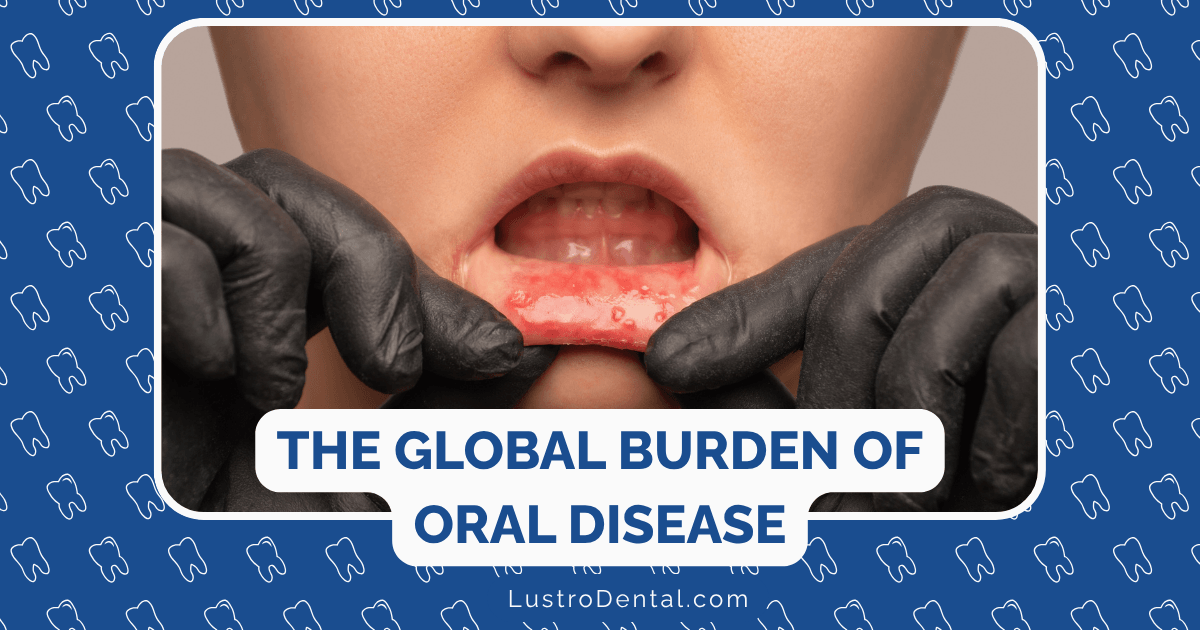Root Canals Are Painful: Debunking Outdated Beliefs About Dental Procedures

Few dental procedures evoke as much anxiety as the root canal. The mere mention of these two words can make even the bravest individuals wince. “I’d rather have a root canal” has become shorthand for describing something extraordinarily unpleasant or painful. But does this notorious reputation reflect the reality of modern root canal treatment?
In this comprehensive guide, we’ll examine the most persistent myths surrounding root canals and other dental procedures, separating outdated beliefs from current facts. Whether you’re facing a potential root canal or simply curious about the truth behind dental folklore, this evidence-based exploration will provide clarity and, hopefully, some reassurance.
The Evolution of Root Canal Therapy
Before addressing specific myths, it’s helpful to understand how root canal treatment has evolved over the decades.
Historical Perspective
Root canal therapy has existed in various forms for centuries. In the early 1900s, the procedure gained standardization but lacked many of the technologies and anesthetics we take for granted today. During this era, root canals were indeed often painful and time-consuming, sometimes requiring multiple lengthy appointments.
Dr. James Richardson, dental historian and endodontist, explains: “Early root canal procedures were performed without the benefit of effective anesthesia or modern rotary instruments. Patients from that era genuinely experienced significant discomfort, which helped cement the procedure’s painful reputation in the public consciousness.”
Modern Transformation
Today’s root canal therapy bears little resemblance to these historical procedures. Significant advancements include:
- Improved Anesthetics: More effective formulations with better delivery systems
- Digital Imaging: Precise diagnostics with minimal radiation
- Rotary Instruments: Efficient, quiet electric tools replacing manual files
- Microscopic Visualization: Enhanced precision through magnification
- Biocompatible Materials: Better sealing and healing properties
- Single-Visit Protocols: Completion in one appointment in many cases
According to the American Association of Endodontists, these advancements have transformed root canal therapy into a procedure that’s comparable in comfort to receiving a routine filling.
Myth #1: Root Canals Are Extremely Painful
This is perhaps the most pervasive myth about root canals, and it’s one that keeps many patients from seeking necessary treatment.
The Reality: Modern root canal procedures are designed to relieve pain, not cause it. The discomfort associated with root canals typically comes from the infection or inflammation that necessitates the procedure, not from the treatment itself.
A 2023 study published in the Journal of Endodontics surveyed 1,400 patients who had recently undergone root canal therapy. The findings were revealing:
- 89% of patients reported the procedure was “not painful” or “only slightly uncomfortable”
- 96% stated they would choose a root canal again to save a natural tooth
- Most patients who experienced discomfort described it as comparable to having a filling placed
Dr. Sarah Johnson, endodontist at the University of Michigan School of Dentistry, notes: “The irony is that root canals actually alleviate pain. When patients come in with severe toothaches from infected pulp tissue, removing that tissue through a root canal provides immediate relief. Most patients are surprised by how comfortable the procedure is.”
Why the Persistent Myth?
Several factors contribute to the continued belief that root canals are extraordinarily painful:
- Historical Legacy: The procedure’s painful past continues to influence perceptions
- Pain Association: Patients often associate the severe pre-treatment pain with the procedure itself
- Anxiety Amplification: Dental anxiety can magnify minor discomfort in memory
- Media Portrayal: Inaccurate depictions in movies and television reinforce negative stereotypes
The Anesthesia Difference
Modern endodontic treatment begins with profound local anesthesia, ensuring the procedure area is completely numb. For particularly anxious patients or complex cases, additional options may include:
- Oral Sedatives: Medications taken before the appointment to reduce anxiety
- Nitrous Oxide: “Laughing gas” to induce relaxation while maintaining consciousness
- Conscious Sedation: Medication-induced drowsiness while remaining awake
- Deep Sedation: Near-unconscious state for extremely anxious patients
Dr. Michael Chen, who specializes in treating dental-phobic patients, explains: “With today’s anesthetic techniques and sedation options, there’s no reason anyone should experience pain during a root canal. We can tailor the approach to each patient’s needs and anxiety level.”
Myth #2: Root Canals Cause Illness and Disease
A particularly harmful myth suggests that root canal-treated teeth harbor bacteria that can cause systemic diseases, including cancer, heart disease, and arthritis.
The Origin of the Myth
This misconception largely stems from discredited research conducted by Dr. Weston Price in the early 1900s. Price’s studies, performed before modern research standards were established, claimed to find connections between root canal treatment and various systemic diseases.
The Scientific Reality
Modern research has thoroughly debunked Price’s findings. Multiple large-scale epidemiological studies have found no connection between endodontically treated teeth and systemic disease. In fact, some research suggests the opposite:
- A 2013 study published in JAMA Otolaryngology found that patients who had multiple endodontic treatments had a 45% reduced risk of cancer compared to those who had no root canal therapy.
- Research from the American Heart Association has found no causal relationship between root canal treatment and heart disease.
- A comprehensive review in the Journal of the American Dental Association concluded there is no valid scientific evidence linking root canal-treated teeth to disease elsewhere in the body.
Dr. Robert Garcia, immunologist and dental researcher, states: “The biological plausibility of root canal-treated teeth causing systemic disease is extremely low. Modern endodontic techniques effectively remove infected tissue and seal the canal system, preventing bacterial proliferation.”
The Danger of the Myth
This misconception can lead patients to choose tooth extraction over root canal therapy, resulting in:
- Unnecessary loss of natural teeth
- Need for more extensive and expensive tooth replacement options
- Potential shifting of remaining teeth
- Bone loss in the extraction area
- Reduced chewing efficiency
Myth #3: Extraction Is Better Than Root Canal Treatment
Related to the illness myth is the belief that extracting an infected tooth is healthier or more effective than saving it through root canal therapy.
The Reality: Dental professionals overwhelmingly agree that preserving natural teeth through endodontic treatment is preferable to extraction in most cases where the tooth can be saved.
The American Association of Endodontists highlights several advantages of saving natural teeth:
- Efficient Chewing: Natural teeth provide optimal chewing efficiency
- Normal Sensation: Preserved proprioception (pressure sensing)
- Natural Appearance: Especially important for visible teeth
- Protecting Other Teeth: Prevents shifting and excessive force on adjacent teeth
- Cost-Effectiveness: Generally less expensive than extraction plus replacement
- Maintaining Jawbone: Prevents the bone loss that follows extraction
A 2024 systematic review in the International Journal of Prosthodontics compared long-term outcomes of root canal-treated teeth versus single-tooth implants. The findings showed comparable success rates, but root canal treatment offered advantages in terms of faster treatment completion, lower initial costs, and fewer complications.
Dr. Lisa Wong, prosthodontist at Boston University Dental School, explains: “While dental implants are excellent tooth replacement options, they’re replacement options. Nothing functions quite like a natural tooth. If a tooth can be saved through endodontic therapy, that’s almost always the preferable approach.”
When Extraction Might Be Appropriate
There are legitimate cases where extraction may be recommended over root canal therapy:
- Teeth with insufficient remaining structure to support restoration
- Vertical root fractures that extend below the gumline
- Severe periodontal (gum) disease compromising tooth support
- Failed previous root canal treatment that cannot be retreated
- Patient-specific factors such as certain medical conditions
Myth #4: Root Canal Treatment Requires Multiple Painful Appointments
Many people believe root canals necessarily involve a series of lengthy, uncomfortable appointments.
The Reality: Advances in endodontic techniques have significantly streamlined root canal procedures:
- Single-Visit Treatment: Many uncomplicated root canals can be completed in one appointment lasting 60-90 minutes
- Efficient Instrumentation: Modern rotary tools clean canals more quickly and thoroughly
- Enhanced Imaging: Digital radiographs and cone-beam CT scans allow for more efficient treatment planning
- Improved Irrigation: Better disinfection techniques ensure thorough cleaning in less time
According to a multi-center study published in the Journal of Endodontics in 2023, approximately 75% of root canal procedures were completed in a single visit, with comparable success rates to multi-visit treatments.
Dr. James Wilson, endodontist in private practice, notes: “Twenty years ago, virtually all root canals required multiple appointments. Today, unless there are complicating factors like extensive infection or unusual anatomy, we can typically complete treatment in one visit, which patients greatly appreciate.”
When Multiple Visits May Be Necessary
Some situations still warrant a multi-appointment approach:
- Teeth with severe infection or abscess
- Complex canal anatomy requiring additional time
- Retreatment of previously root canal-treated teeth
- Patient comfort factors (difficulty remaining open for extended periods)
- Certain medical conditions
Even in these cases, modern techniques ensure each appointment is as comfortable and efficient as possible.
Myth #5: Root Canal-Treated Teeth Don’t Last Long
A common misconception suggests that teeth that have undergone root canal therapy become brittle and are destined to fail within a few years.
The Reality: Endodontically treated teeth can last a lifetime with proper restoration and maintenance. Research published in the Journal of Endodontics found that root canal-treated teeth have a survival rate of approximately 97% at 8 years and 85% at 20+ years.
The key factor in long-term success is proper restoration following the root canal procedure. Because root canal-treated teeth no longer receive blood supply from the pulp, they can become more brittle over time. However, this is effectively addressed through appropriate restoration:
- Dental Crowns: Typically recommended for back teeth (molars and premolars) that endure significant chewing forces
- Fiber Posts: May be used to reinforce teeth with substantial structure loss
- Conservative Restorations: Onlays or fillings may be sufficient for teeth with minimal structure loss, particularly front teeth
Dr. Thomas Lee, restorative dentist at the University of Pennsylvania School of Dental Medicine, explains: “The notion that root canal-treated teeth are destined to fail is simply untrue. When properly restored and maintained, these teeth can function effectively for decades. The restoration is as important as the root canal itself.”
Factors Affecting Longevity
Several variables influence how long a root canal-treated tooth will last:
- Quality of the Endodontic Treatment: Thorough cleaning and sealing of all canals
- Type of Final Restoration: Appropriate coverage to prevent fracture
- Occlusal Forces: How much pressure the tooth receives during chewing
- Oral Hygiene: Maintenance of gum health around the treated tooth
- Remaining Tooth Structure: Amount of natural tooth available for restoration
Myth #6: If There’s No Pain, There’s No Need for a Root Canal
Many people believe that dental problems requiring root canal therapy always cause significant pain, leading them to delay treatment when symptoms are mild or absent.
The Reality: While pain is a common indicator of pulp damage or infection, not all teeth requiring root canal treatment cause noticeable discomfort. Endodontists regularly treat teeth with pulp necrosis (death) or infection that produce minimal or no symptoms.
A 2022 study in the International Endodontic Journal found that approximately 40% of teeth diagnosed as needing root canal therapy were causing mild or no pain at the time of diagnosis.
Dr. Maria Rodriguez, endodontist and dental educator, explains: “Pulp tissue can die gradually, and once completely necrotic, the nerve can no longer transmit pain signals. However, the infection can continue to damage surrounding bone without causing noticeable symptoms until it reaches an advanced stage.”
Signs That Might Indicate Need for Root Canal Treatment
Beyond pain, other indicators that might signal the need for endodontic evaluation include:
- Prolonged Sensitivity: Lingering discomfort to hot or cold stimuli
- Discoloration: Darkening of a tooth compared to adjacent teeth
- Swelling: Puffiness in the gum tissue around a tooth
- Pimple-Like Bump: Small raised area on the gum near a tooth root (fistula)
- Tenderness: Discomfort when pressing on the gum or biting down
- Radiographic Findings: Dark areas at root tips visible on X-rays
Regular dental check-ups are crucial for identifying these issues before they progress to more serious infections or abscesses.
Myth #7: Root Canals Remove the Roots of Your Tooth
Some patients mistakenly believe that a root canal involves removing the actual roots of the tooth, leaving it unstable or floating in the socket.
The Reality: The term “root canal” refers to the natural cavity within the tooth’s root where the pulp tissue and nerves reside. The procedure involves removing the contents of these canals (infected or inflamed pulp tissue), not the roots themselves.
During root canal treatment:
- The pulp chamber and canal spaces are accessed through the crown of the tooth
- The infected or inflamed pulp tissue is removed from within these spaces
- The canals are cleaned, shaped, and disinfected
- The empty canals are filled with a biocompatible material (typically gutta-percha)
- The access opening is sealed with a temporary or permanent filling
The roots remain intact and continue to anchor the tooth in the jawbone. In fact, preserving this natural anchoring system is one of the primary advantages of root canal therapy over extraction.
Dr. Jennifer Adams, endodontist in private practice, notes: “I frequently need to explain this misconception to patients. They’re often relieved to learn we’re only removing the damaged tissue from inside the root, not the root itself. The tooth remains securely attached in the jaw just as it was before.”
Myth #8: Young People Don’t Need Root Canals
There’s a common misconception that root canal therapy is primarily for older adults, leading to surprise when younger patients require the procedure.
The Reality: Teeth at any age can develop conditions requiring endodontic treatment. While the cumulative effects of decay, large fillings, and trauma may make root canals more common in older adults, several factors can necessitate root canal therapy in children, teenagers, and young adults:
- Dental Trauma: Sports injuries, falls, or accidents can damage the pulp in teeth of any age
- Deep Decay: Rapidly progressing cavities can reach the pulp quickly, especially in children
- Developmental Abnormalities: Some teeth form with thin enamel or other structural issues
- Cracked Teeth: Even young adults can develop cracks from habits like ice chewing or teeth grinding
According to the American Academy of Pediatric Dentistry, pulp therapy (including root canal treatment) is a common and necessary procedure for preserving damaged primary (baby) and young permanent teeth.
Dr. Robert Johnson, pediatric dentist at Children’s Hospital Dental Clinic, explains: “We perform pulp therapy on children of various ages. Preserving natural teeth is particularly important during developmental years, as premature tooth loss can lead to spacing issues, speech problems, and other complications.”
Age-Specific Considerations
Endodontic treatment approaches may be modified based on patient age:
- Primary Teeth: Modified pulpotomy or pulpectomy procedures
- Young Permanent Teeth: Vital pulp therapy techniques to preserve remaining healthy pulp
- Mature Teeth: Standard root canal procedures
Myth #9: You Can’t Get a Root Canal If You’re Pregnant
Some believe that root canal treatment is unsafe during pregnancy, leading expectant mothers to avoid necessary dental care.
The Reality: Root canal therapy is considered safe during pregnancy and is often the preferred treatment for managing dental infections in pregnant patients. Untreated dental infections actually pose a greater risk to both mother and developing baby than the endodontic procedure itself.
The American Dental Association and the American Congress of Obstetricians and Gynecologists both support necessary dental treatment, including root canals, during pregnancy.
Dr. Lisa Chen, who specializes in treating pregnant patients, explains: “Dental infections during pregnancy can increase risks of preterm birth and low birth weight. Root canal therapy to eliminate infection is much safer than allowing the infection to persist or resorting to extraction, which is more invasive.”
Pregnancy-Specific Modifications
When performing root canal treatment on pregnant patients, dental providers typically:
- Schedule During Second Trimester: When possible, as this is generally considered the safest period for dental treatment
- Use Pregnancy-Safe Anesthetics: Local anesthetics like lidocaine with epinephrine are considered safe
- Minimize X-rays: Using digital radiography with protective shielding when imaging is necessary
- Position Comfortably: Accommodating the patient to prevent supine hypotensive syndrome
- Consult with OB/GYN: Coordinating care with the patient’s obstetrician when appropriate
Myth #10: Once You Get a Root Canal, You’ll Need More on Other Teeth
Some patients worry that having one root canal leads to a cascade effect, necessitating similar procedures on other teeth.
The Reality: Root canal treatment on one tooth does not increase the likelihood of needing the procedure on other teeth unless those teeth have their own independent issues. Each tooth’s pulp system is separate and unconnected to other teeth.
Dr. Michael Roberts, endodontist and dental researcher, explains: “This misconception likely stems from the fact that whatever risk factors led to the first root canal—such as poor oral hygiene, a high-sugar diet, or teeth grinding—may affect other teeth as well if not addressed. But the procedure itself doesn’t cause problems in other teeth.”
Risk Factor Management
After receiving a root canal, dentists typically work with patients to identify and address factors that may have contributed to the initial problem:
- Decay Prevention: Improved home care and professional cleanings
- Diet Modification: Reducing sugar intake and acidic beverages
- Habit Management: Addressing grinding, clenching, or ice chewing
- Restoration Evaluation: Checking existing fillings for leakage or fractures
- Regular Monitoring: More frequent check-ups if needed
By addressing these underlying factors, patients can significantly reduce the likelihood of needing additional root canal procedures.
Modern Alternatives and Adjuncts to Traditional Root Canal Therapy
Endodontic treatment continues to evolve, with several innovative approaches emerging in recent years:
GentleWave® Procedure
This system uses multisonic ultracleaning technology to deliver cleaning fluids throughout the root canal system, reaching areas that traditional instruments might miss. Benefits include:
- More thorough cleaning of complex anatomy
- Preservation of more tooth structure
- Often completed in a single visit
- Potentially improved healing outcomes
Regenerative Endodontics
For certain cases, particularly in younger patients, regenerative approaches aim to restore damaged pulp tissue rather than removing it entirely:
- Pulp Revascularization: Stimulating new tissue growth in immature teeth
- Stem Cell Therapies: Experimental approaches using dental stem cells
- Bioactive Materials: Substances that promote tissue healing and regeneration
Dr. Sarah Williams, researcher in regenerative endodontics, notes: “These approaches represent the cutting edge of endodontic treatment. While traditional root canal therapy remains the standard of care for most cases, regenerative techniques offer exciting possibilities for the future, particularly for young patients.”
What to Expect During Modern Root Canal Treatment
Understanding the actual procedure can help alleviate anxiety for patients facing root canal therapy:
1. Diagnosis and Planning
- Comprehensive examination including testing of the tooth’s response to stimuli
- Appropriate radiographs to visualize root anatomy and identify infection
- Discussion of treatment options and what to expect
2. Preparation and Anesthesia
- Administration of local anesthetic to ensure complete comfort
- Placement of dental dam to isolate the tooth and maintain a clean working environment
- Application of topical anesthetic before injection to minimize discomfort
3. Access and Cleaning
- Creation of a small opening in the crown to access the pulp chamber
- Removal of infected or inflamed pulp tissue
- Cleaning and shaping of the canals with specialized instruments
- Irrigation with antimicrobial solutions to disinfect the canal system
4. Filling and Sealing
- Drying of the canals
- Placement of gutta-percha (a biocompatible material) to fill the cleaned canals
- Sealing of the access opening with a temporary or permanent filling
5. Restoration
- Placement of a permanent restoration (filling, crown, etc.) either at the same appointment or a subsequent visit
- Evaluation of the bite and adjustments as needed
6. Follow-up
- Brief check-up to ensure proper healing
- Long-term monitoring during regular dental visits
Dr. Jennifer Wilson, who specializes in patient-centered endodontics, emphasizes: “Clear communication throughout the procedure helps tremendously with patient comfort. I explain each step before it happens and check in regularly with patients to ensure they remain comfortable. Most are surprised by how smooth the process is.”
Conclusion: Making Informed Decisions About Endodontic Care
The persistent myths surrounding root canal therapy often prevent patients from seeking necessary treatment, leading to avoidable pain, tooth loss, and more extensive dental problems. Understanding the reality of modern endodontic procedures can help patients make informed decisions about their dental care.
Key takeaways include:
- Modern root canal therapy is comparable in comfort to receiving a filling
- The procedure relieves pain rather than causes it
- No scientific evidence links properly performed root canals to systemic disease
- Preserving natural teeth through endodontic treatment is preferable to extraction in most cases
- Root canal-treated teeth can last a lifetime with proper restoration and care
If you’re experiencing dental pain or have been told you might need a root canal, consider consulting with an endodontist—a specialist with advanced training in root canal procedures. Their expertise and access to specialized equipment can make the experience even more comfortable and successful.
Remember that dental science continues to advance, making procedures more effective, comfortable, and predictable than ever before. Don’t let outdated beliefs from dentistry’s past prevent you from benefiting from the excellent care available today.
Have you had a root canal experience that surprised you? Share your story in the comments below to help others overcome their dental anxiety.







